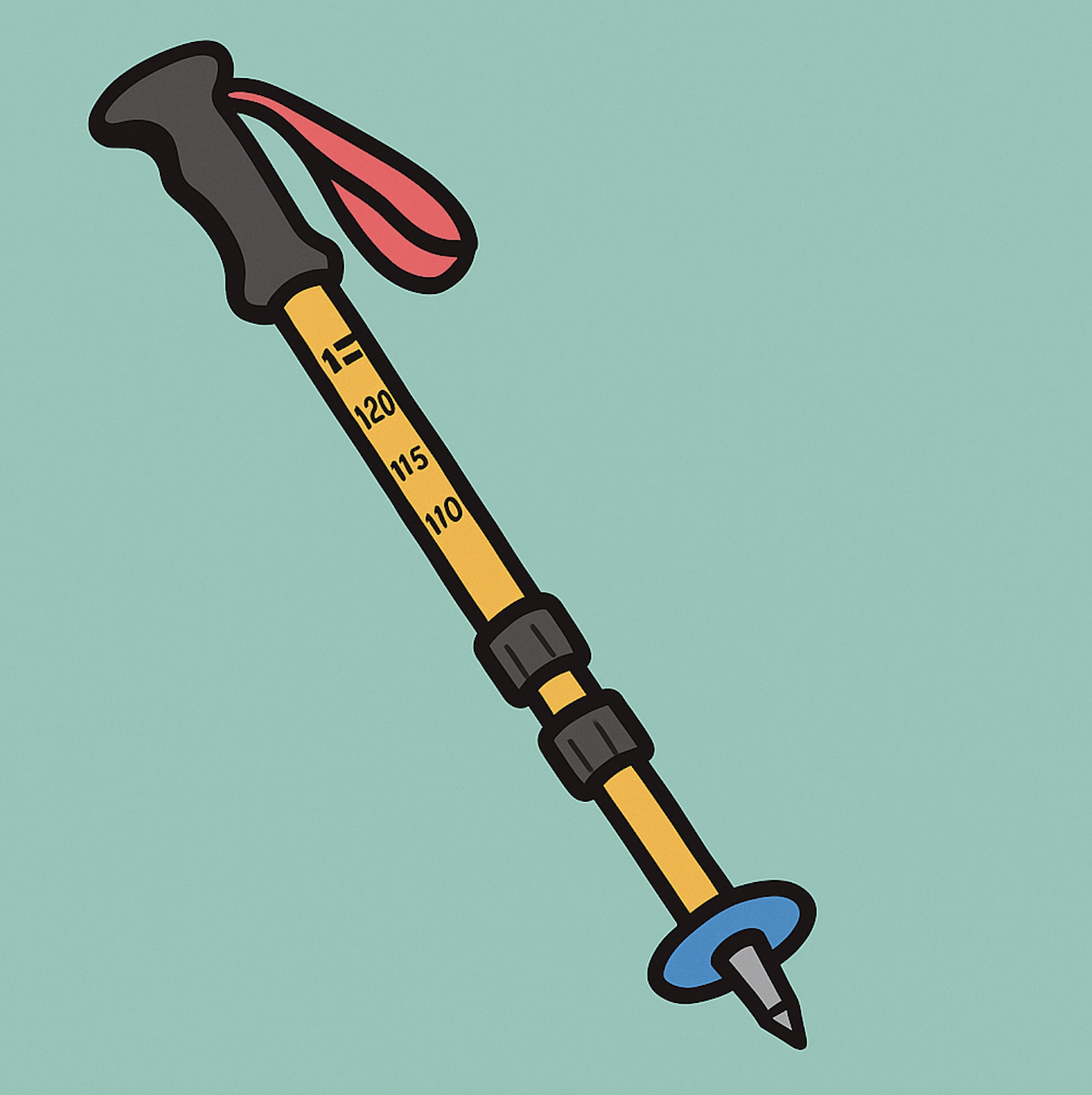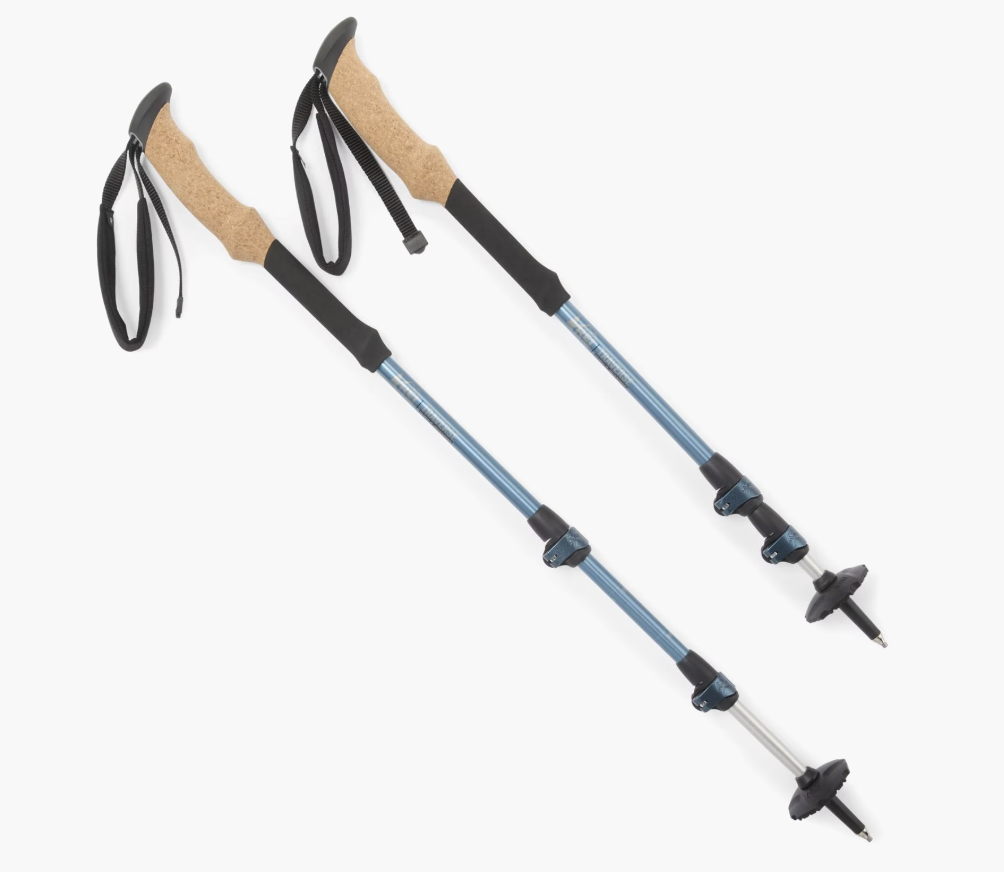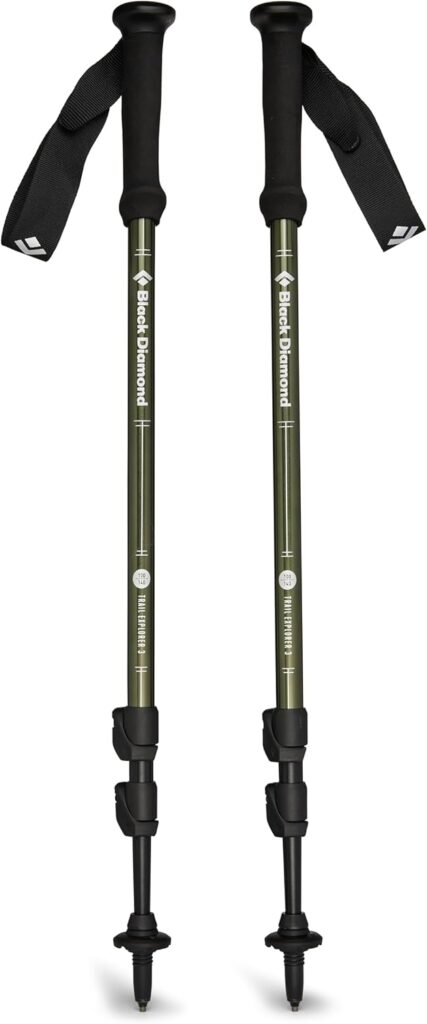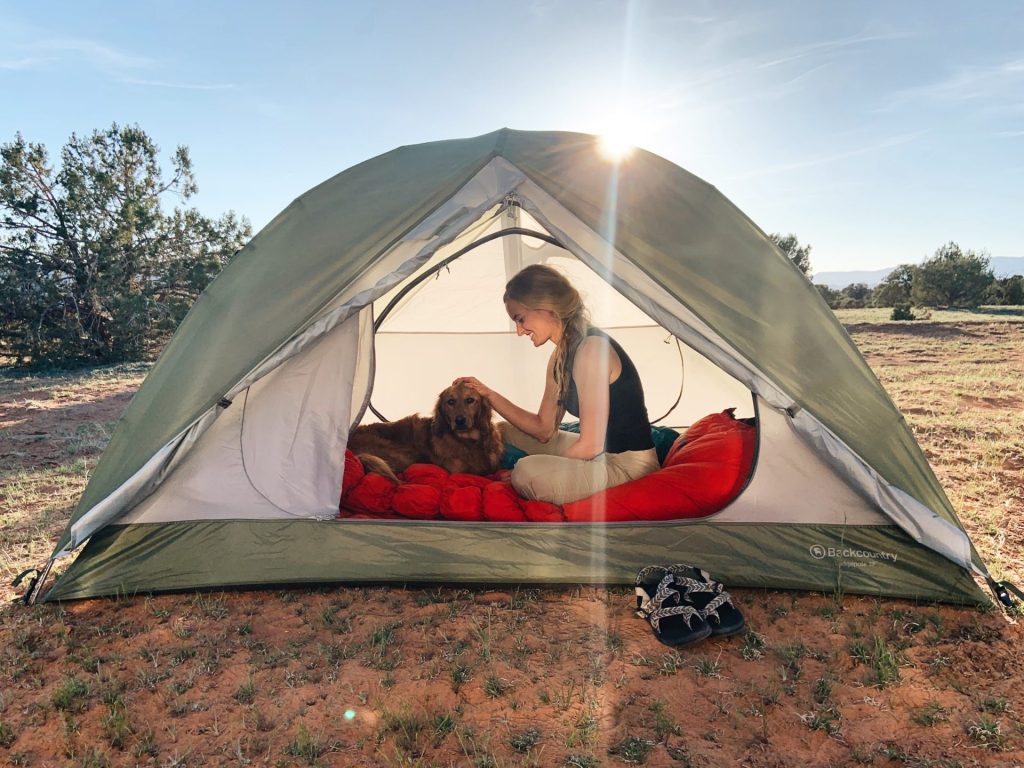From budget-friendly beginner models to ultralight carbon fiber poles, this guide covers everything you need to know about picking the right trekking poles.

Trekking poles are some of the the most useful pieces of gear—yet can be overlooked and underrated. They add stability on uneven trails, help ease strain on your knees, and make carrying a heavy pack or a child feel more manageable. But with so many different types on the market, figuring out which pair is right for you can feel daunting.
In this post, I’m break down the different type of materials and why that matters, nice features to look out for when purchasing, and explore the different styles of trekking poles so you can confidently choose the pair that best matches your adventures.
Types of Trekking Poles
There are a few different types of trekking poles. Some fold up into thirds, while others extend, and some come at a fixed length.

Telescoping (Adjustable)
These poles collapse down into two or three sections that slide into each other. They’re the most versatile option, since you can extend the length for going down hill, or shorten for uphill hiking. Great for hikers who want one reliable pair for all-around use.

Folding (Z-Poles)
Z-poles fold up like tent poles, making them extremely compact and lightweight. They’re a favorite among ultralight backpackers and trail runners. The trade-off is less adjustability and sometimes less durability for rugged conditions. But, because they are able to fold up so small, these are my go to pick for backpacking.

Fixed-Length (Specialty)
As the name suggests, these poles don’t adjust or fold—they’re one solid piece. They’re the lightest and most rigid option, but also the least flexible. Typically used by ultralight purists or athletes who need maximum efficiency and don’t mind carrying poles that can’t collapse.
Materials: Aluminum vs. Carbon
When is comes to picking the right trekking pole, material matters. The two most common materials are aluminum and carbon fiber.

Aluminum
Aluminum is a very classic choice for trekking poles—and for good reason. It’s a sturdy, affordable, and reliable material that holds up well in a wide range of hiking conditions. One of Aluminum’s biggest strength is how tough it is. Aluminum tends to bend under pressure rather than break. This makes it more forgiving if you fall on your poles, they get jammed between rocks, and are better equipped to handle heavy loads.
Weight: Aluminum poles are typically heavier than carbon fiber, but we’re usually talking a difference of just a few ounces. For day hikers and casual backpackers this extra weight often isn’t a dealbreaker. The added sturdiness can feel reassuring when carrying a heavy pack or navigating rocky terrain.
Durability: If you’re rough on gear, aluminum poles are your friend. They’re tougher than carbon, can handle scrapes and knocks, and usually last longer if you hike in rugged terrain.
Cost: Another big advantage is price. Aluminum poles are generally more budget-friendly, making them a great starting point for new hikers or those who don’t want to splurge on gear. Many high-quality aluminum poles still come packed with modern features—like flick-lock adjusters, cork grips, or interchangeable baskets—without the premium carbon fiber price tag.
Carbon Fiber
Carbon fiber aka composite poles are the go-to choice for hikers who want the lightest gear possible. Known for their light feel and sleek design, they’re especially popular among long-distance hikers, ultralight packers, and trail runners.
Weight: The biggest draw of carbon fiber is its lightweight. Shaving off even a few ounces can make a noticeable difference over thousands of steps, which is why thru-hikers often consider them essential. The reduced swing weight also helps your arms and shoulders feel less fatigued on long days.
Durability: While strong, carbon fiber has a different failure point than aluminum. Instead of bending under pressure, it’s more likely to crack or snap if stressed beyond its limit. This brittleness makes them slightly less forgiving if you’re rough on gear or hiking in very rugged conditions. Carbon fiber naturally absorbs shock and vibration. On rocky or hard-packed trails, this can reduce strain on your wrists and elbows.
Cost: Carbon fiber poles almost always come with a higher price tag. You’re paying for weight savings and premium feel, which may or may not be worth it depending on your hiking style and frequency.
Which Should You Choose?
When it comes down to choosing between aluminum and carbon fiber trekking poles, it really depends on your hiking style. Aluminum poles are the go-to if you want durability, value, and the peace of mind that they’ll hold up against scrapes, rocky trails, and heavy use. On the other hand, carbon fiber poles are all about performance—if weight savings are your top priority and you’re logging big miles where every ounce counts, they can make your hikes feel lighter and less tiring.
| Aluminum | Carbon Fiber |
| ✅ Bends rather than snaps, very durable | ✅ Super lightweight, reduces fatigue on arms |
| ✅ Lower price point | ✅ Stiff for quick, strong power transfer |
| ❌ Heavier than carbon | ❌ Not ideal for rocky/rough terrain |
| ❌ Less efficient for weight savings | ❌ Can snap if overloaded |
My Recommendations:

Tied for First Place- REI’s Traverse Trekking Poles: These are aluminum, adjustable, and super sturdy. They are great for an all-arounder pole set and are perfect for entry level hikers to experienced. They have ergonomic cork grips and an adjustable wrist strap. They come with both trail and snow baskets so you could use them for cross-country skiing too!

Tied for First Place- TrailBuddy Trekking Poles: Price wise, these take the cake. A value-packed option with hybrid cork and EVA handles for comfort in both warm and cool conditions. Built from aluminum, they’re impressively durable for the price point. The poles collapse down to fit easily in a pack and extend up to full trekking length, making them versatile for hikers of most heights. They also come with swappable tips and baskets, so you’re covered whether you’re on dirt trails, rocky ground, or snowy paths. At under $40, they’re an easy gamble if you’ve been wanting to try trekking poles without a big investment.

2nd Place – Distance Carbon Z Trekking Poles: A higher end pole, with a higher price tag but worth it. These are my favorite carbon pair, and are a fixed length after they are extended. Height wise, I am between a 100 cm and 105 cm length, and sized down which I like. These fold up so small and are mega light. Perfect for a multi day backpacking trip.

3rd Place – Black Diamond Trail Explorer 3 Trekking Poles: A great set for the average hiker, they’re trail-ready with durable aluminum construction and comfortable EVA foam grips that wick moisture. The three-section design extends anywhere from 100 cm to 140 cm, making them adjustable for a wide range of users and trail conditions. A great investment if you’re wanting to upgrade poles!
There are lots of other good brands out there, so if you’re using a pair of poles you love, leave a comment—I’d love to hear your recommendations. Everyone has different preferences when it comes to grip style, adjustability, and weight, but hopefully this guide is useful for your next adventure.
Looking for more gear recommendations? Check out these related post:





